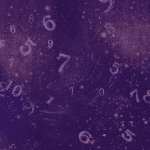
SAT Score Calculator for the Digital SAT
Introducing our SAT Score Calculator for the Digital SAT (as well as the Paper-and-Pencil SAT)—a simple tool to help you predict your SAT scaled score based on your raw score, even on the adaptive digital test!
>>> Jump to the Calculator <<<
Understanding How SAT Scores Are Calculated
The SAT consists of two main sections: Evidence-Based Reading & Writing and Math.
Each section is scored on a scale of 200–800, combining for a total score range of 400–1600. Your score is determined by converting the number of correct answers (raw score) into a scaled score. There is no penalty for incorrect answers.
The conversion between raw scores and scaled scores differs slightly between each administration of the SAT. This is because of a process called equating, which is designed to make sure that test scores from different administrations can be fairly compared. If an SAT ends up being a little harder or easier than another, equating smooths out these differences.
For more information on how the SAT is scored, check out our guide to the digital SAT and our complete guide to average and good SAT scores. And if you’re ready to see how your raw score might convert to a scaled score on the real SAT, jump to our interactive SAT score calculator!
Digital SAT Score Calculation vs. Paper-and-Pencil SAT Scoring
The digital SAT is section-adaptive, meaning that you will get a harder or easier second module of Reading/Writing or Math on the Bluebook testing app based on how well you performed on the first module in the respective subject.
This affects raw-to-scaled score conversion because getting questions right on the harder module versus the easier module will earn you a higher scaled score. If you get the easier second module, the highest scaled score you can possibly achieve in that section will likely be capped somewhere between 660 and 700 (out of a total 800).
In contrast, the paper-and-pencil version of the SAT looks the same for every student. It has more total questions than the digital SAT, and converting between raw scores and scaled scores is based on a simple conversion table. Unlike on the digital SAT, it doesn’t matter which questions you get right on the paper SAT, a certain raw score always equates to the same scaled score on that test administration.
How to Use the SAT Score Calculator
Our SAT Score Calculators uses your raw scores for Reading & Writing and Math to predict your scaled scores. We’ve created score calculators for both the digital SAT (which most students are taking as of 2024), as well as the paper version of the test.
Instructions: Move the slider to display your raw score (number of correct answers) for each module of the SAT, and see your estimated scaled score, as well as percentile, calculated on the right. Scroll down to see your combined total score and percentile, as well.
Remember that raw scores convert to slightly different scaled scores on different SAT tests. Furthermore, the College Board has released limited information on digital SAT adaptivity and scoring, so the output on these score calculators should be treated only as an estimate.
Digital SAT Score Calculator (Interactive)
Paper-and-Pencil SAT Score Calculator (Interactive)
Additional Resources for Improving your SAT Score
Free SAT Practice Tests:
- Magoosh Free Practice Test for the Digital SAT
- College Board Free Practice Test for the Digital SAT
- College Board Free Paper SAT Practice Tests
Study Schedules:
- One Week SAT Study Schedule
- One Month SAT Study Schedule
- Two Month SAT Study Schedule
- Three Month SAT Study Schedule
Need more help?
All Magoosh SAT prep plans are digital SAT ready! Start studying today.





